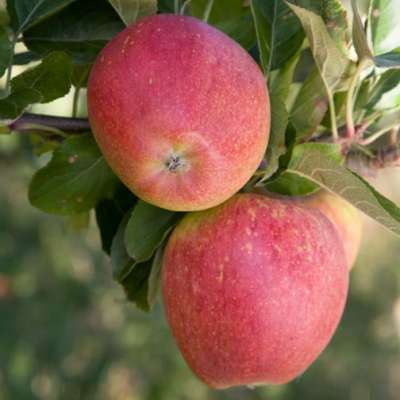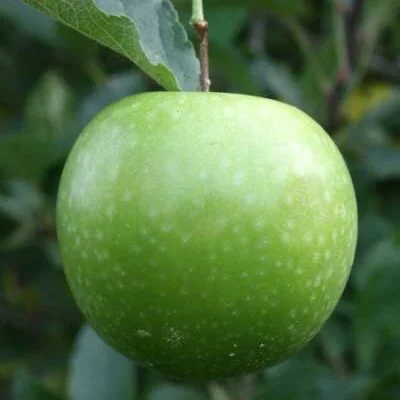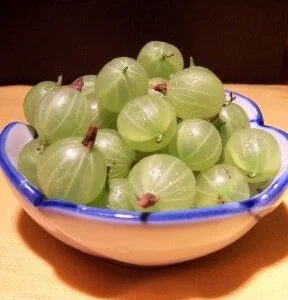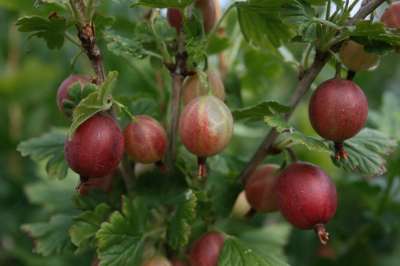Your basket is currently empty!
Why grow your own fruits?
This might seem a silly question as, having decided to read an article on growing fruit trees in the first place would suggest some pre-ordained interest in the subject or a desire to grow these delicious fruits for yourself. If any further impetus or inspiration were needed well, it’s not hard to find. There are any number of reasons why you might choose to grow fruit trees based on many factors, which could be financial, for health reasons, sentimentality, hobby-based or ecological.
Browse our huge online selection of fruit trees here.
1] The financial aspect
Perhaps the strongest signal of all is that of just how much money could be saved on your weekly grocery bill. Although the entire Grow-your-own industry often parlais facts about you can save-money-by-growing-this-or-that, often with short-term crops that are yielded only the once, the fact is it can be hard to see what you are really saving. But with a very long-term prospect such as a fruit tree that can prosper for 20 years or more, well the figures really do add up. Simply consider a normal dwarf Apple tree – Cox’s Orange Pippin. This variety is nothing special when it comes to performance, it’s certainly not the most heavy yielding variety yet even a Cox’s, on a dwarf M9 rotstock suitable for any garden, will yield 20-30ib’s of fruit per season with no special treatment. Now look at your supermarket price for dessert apples; roughly £1.50 or more per ib, right? Now once the initial purchase value has been paid [think about£20] thereafter the cost of upkeep amounts to little more than a handful of fertilizer and a pair of secateurs to prune with. That’s it. So a rough calculation based on at least 20 years of active service soon reveals a quite staggering profit. Multiply that over even a modest selection of fruit trees and it’s undeniable that even if your planting area is restricted, you can soon start to save a lot of money over the years.
2] Vastly improved flavour
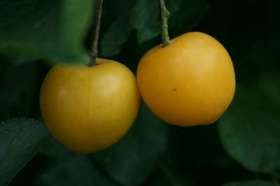
This might make me sound incredibly old but I worry that some of the younger generation don’t actually really ‘know’ what a proper strawberry, or an apple, or a plum – actually tastes like. Until you have picked and eaten your own fruits, you don’t realise just how far removed from reality supermarket-bought samples actually are! There are a few reasons for this; variety, harvesting and cultivation methods, and freshness, all conspire to rob the fruit of it’s rightful flavour. Grow your own – have the choice of a vastly increased variety – pick and eat when it is at it’s peak and devour at once. Perfection has been achieved…..
3] Superior choice
You could buy maybe 4 or 5 varieties of apple at your supermarket right now yet there are over 2,000 varieties in existence, a great many of which you can still buy at specialist fruit tree nurseries. The deeper you dig [no pun intended] the greater the fascination with some old heritage varieties having complex flavour nuances of spice and nutmeg, aniseed, pineapple and wine. And when did you last see Mulberries available to buy? Or experience the wonderful full-on power of the Damson? Golden plums, Quinces; Medlars; or Asian Pears?
4] The save the earth bit
We have all been subject to the food miles debate in the press these last few years. The eco footprint of going and harvesting fruit from your own allotment, or back yard even, couldn’t be any smaller so you can enjoy the fruits of your labour smug in the knowledge that you’ve done your bit for the o-zone layer as well.
5] Back in the day….
Sentimentality can play a big part forming our choices and, for many of us, the gardens of our childhood, or those of our parents or grandparents, become heavily imbued with nostalgia. Central to this is often a fruit tree – or 3 – which often tasted so much better than anything ever tasted since! So a hunt begins to track down this special old variety, or perhaps a desire is instilled to cultivate a small orchard of ones own that will recall those memories of days long since passed. Happily it is perfectly possible to re-claim this little piece of yesterday as so many of the very old traditional varieties do still exist and can be planted in modern gardens.
6] Health and traceable origins
One of the most common and important reasons for growing your own fruit is that you have complete control over exactly what goes into the food that you eat. You know exactly where it has come from and you can be sure that is has been raised and cultivated to satisfy your own personal standards and priorities.
7] Because growing fruit trees is fun
All ages and all abilities can enjoy the unique experience and gain immense satisfaction of growing fruit trees. If you are new to this whole grow-your-own malarky, then just imagine the thrill of hand picking your first delectably ripe cherries, or plums from a tree in your own garden or patio. Nothing can beat the anticipation of watching and observing the slowly fattening fruits and waiting for them to colour and ripen. You can stand back and say – ‘I did that’.
SOME THINGS TO KNOW AND UNDERSTAND ABOUT FRUIT TREES
Rootstocks explained
To many a casual observer, a fruit tree is just a ‘tree’ – an all-in-one fruiting unit that has its own roots and it’s own branches. Nothing could actually be further from the truth! The fruit trees you will buy and nurture in your garden or orchard are actually a crafty amalgamation of two entirely different trees! A fruit tree cultivar [be it a traditional Cox’s Orange Pippin Apple, a Victoria plum, or whatever] has, for various reasons that will be explained, to be joined with a rootstock and this rootstock will influence the tree in beneficial ways. On young trees [and sometimes even older ones] it is still visible you can actually still see this join a few inches above the root, if you look carefully.So what is a rootstock?
Rootstocks have been developed over many years by horticultural institutions worldwide and are generally raised from closely allied species of the fruit concerned. To begin with they look rather like the host – an apple rootstock looks much like an apple tree itself. It’s flowers are like appleblossom but they seldom have fruits that are worthwhile. Apple rootstocks are usually selected forms of Malus sylvestris crab apples. Rootstocks for Pears will have been derived from Pyrus communis [a type of wild Pear] or Cydonia Quinces which are closely related. And so on. All the different fruits will have rootstocks specific to them so you can’t have an apple grafted onto a Pear rootstock because the union between two unrelated fruits would be unsuccessful.
So why are fruit trees grafted in this way? It’s a complicated and expensive procedure that has to be fulfilled by skilled nurserymen which are very experienced in their work. People that can graft fruit trees successfully tend to be a very select few and because of this it adds greatly to the cost of the tree. So why do we bother? The reason fruit trees are grafted is because if a fruit tree is grown on it’s own roots, it will take forever to fruit. It will spend lots and lots of years merrily growing away and looking fabulously healthy and full of promise, but many Springs will come and go with a tedious lack of any real progression. It can be 20 years before any fruit is seen by which time the tree itself will probably be as big as your house! This is where the rootstock itself comes in. It actually encourages the production of fruit much, much earlier in life and the ‘parasite’ it is supporting [i.e. the actual fruit tree variety itself] will usually yield within 5 years and often sooner, depending on the rootstock concerned [more of that later] In addition to this, rootstocks are developed with different growth tendencies. Some have a vigorous attribute; others will be more compact or even dwarfing. So, by choosing an appropriate rootstock you can have a tree suitable for your needs, whether you are growing a traditional large orchard, or, at the other end of the scale, growing miniature little trees in pots on your patio. There is sure to be a ready and willing rootstock able to deliver your needs!
Fruit tree pollination explained
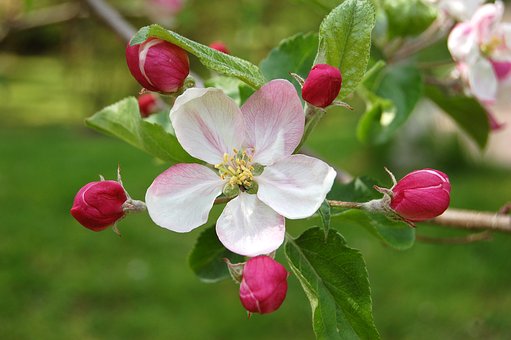
The second most important aspect of your selection, after that of rootstock, is pollination. Most varieties of fruit tree are not self fertile, that is if they are grown on their own they may never bare fruit or if they do it will be few and of poor quality. That is why so many disappointing purchases have arisen through buying trees from non-specialist nurseries that did not advise the hapless client that his or her tree needed a pollinator!
To help in identifying which trees will ‘go’ together pollination groups have been devised. This basically seperates the varieties into flowering seasons; the main criteria for good polination is that the flowers should be open at the same time. Although to the causal observer apple trees may look like they all blossom at the same, time, but this isn’t actually true. During the brief but glorious blossom-time in our English orchards, varieties will start and finish flowering at different times. If you select two trees with different flowering periods they may miss each other like long lost lovers in the night….. If this all sounds too comlicated don’t worry. The system is easy to understand and if you’re still a bit lost a specialist nursery in fruit trees can quide you in your choice and make sure you haven’t made any clangers when it comes to selection. Here’s the way it works:
Varieties have a letter or number prefix and are classed in A,B,C or D pollination groups, or 1,2,3 or 4. All you need to do is make sure that the varieties you have chosen are in the same or adjacent groups. As there is some overlap in flowering period you can for example choose 2 ‘B’ polination group or an ‘A’ and a ‘B’ together or a ‘B’ and a ‘C’ and it will still work. What you can’t do is break the chain and miss one out – an ‘A’ and a ‘C’ for example would miss one another and no fruit would be borne.
Self fertile fruit trees
There are also a few varieties that are known as self-pollinating and these are ideal for those of you who can only grow one apple, or one pear, because they will still fruit on their own. However if you are planting a mixture of varieties it’s best to do a little homework on pollination, make an informed selection and get a diverse mix of pollinating partners.
Ways to grow your fruit trees
Of course a fruit tree isn’t just a ‘tree’ and over the years countless training methods and shapes have evolved or been invented. Don’t be too disheartened if your preconception that a fruit tree should look like, well – a ‘tree’ because this diversification is a good thing. It has enabled fruit trees to be incorporated into any and every garden and there are forms and growing systems suitable for most applications. So whatever your circumstances, ability and dreams, you can grow fruit trees.
The Bush tree
By far the most commonly grown tree is the bush tree. A traditional ‘tree’ shape which comes in many different sizes according to the vigour of the rootstock it is grown on. Bush trees can therefore be sub-divided into miniature bush, dwarf bush, semi dwarf bush, vigorous bush & so on. All will have the same basic shape – a straight trunk with the branch canopy on top. This method is suitable for all the different fruit types and has the advantage that is can be mown under. It is the most productive method of all and the planting distance is the same as the height of the tree so if you are choosing a rootstock that grows 2 metres in height you will need to allow not less than 2 metres in width.
The Cordon tree
Mastered centuries ago, this growth form is second in popularity only to the bush tree. The reason it became so popular is because it can be incorporated into small spaces – a tree only needs about 24”+ in which to grow yet an established cordon can yield up to 10ibs of fruit. The length of the trunk can be quite accomodating and reduced to around 180cm’s in height, or allowed to grow higher. The fruits are borne on short side spurs which are kept trimmed back to just a few inches. Cordons were traditionally planted at a 45 degree angle but these days they are more usually grown vertically. It is very easy to understand how to prune a cordon tree as it is quite a simple method so this type of tree is recommended to beginners who want quick and uncomplicated results. Cordon growing is normally associated with apples, pears and plums. Plant 24” apart, in sheltered locations the trees can be grown with just a simple stout bamboo cane as support, or they can be grown against a fence or wall with rubber coated straining wires on which to tie them.
Cordon trees will normally start to yield more quickly than the other growing methods.
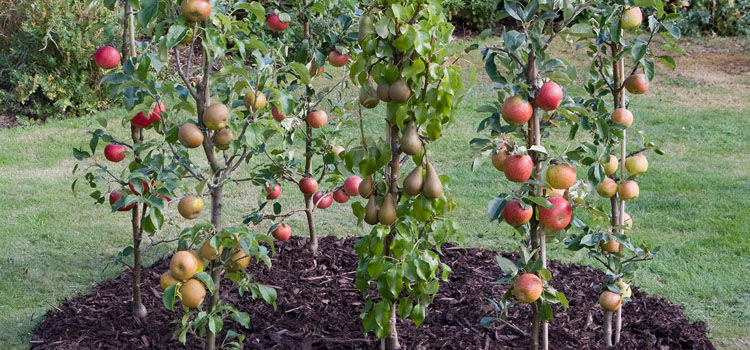
The espalier trained tree
A classic for wall-training, but can also be grown against a fence-post and wire support system. The outline of the tree consists of one main trunk with orderly ‘tiered’ horizontal branches. Normally there are two or three tiers, the side laterals can be trained out to a minimum of 90cm’s each side but can be allowed to grow longer if required. A minimum spacing of 180-200cm’s should be allocated for each tree, with the same in height. Once the main framework has been achieved, espaliers are easy to maintain. The espalier form is used only for apples and pears.
The fan trained tree
Similar in use to the espalier tree, but with a more graceful ‘fan’ shape. Requires the same spacing, suitable for all fruit trees so a good alternative to those that won’t grow well as espalier where a wall trained tree is required.

Stepover trees
Although relatively obscure until recently, these tiny little trees have recently exploded in popularity. Stepover trees are the very smallest of all growing systems and are mostly applied to uses such as border edging, along a path, the allotment, kitchen garden or to divide the productive and ornamental area’s of the garden. With a top height of just 15-18” you can literally ‘step over’ them, the side laterals grow out to form a tree of around 120-150cm’s in length. The outline of the tree is rather like a capital ‘T’. Because of the restricted size, stepovers can’t be expected to produce heavy yields but they are both novel and attractive, and the fruits that are produced can be very large. Space 150cm’s apart; a top straining wire is required until they are established. Apples and Pears are traditionally the fruits grown as stepovers, but you can also try plums and cherries too. Stepovers are only ever grown on the smallest possible rootstocks – M27 for apples, Quince C for pears, Pixy for plums or Gisele 5 for cherries. The nursery will automatically have grown the stepover trees on the most appropriate rootstock.
Supercolumn trees
Along with Ballerina and Minarette trees which are of similar application, this is the most popular form of tree for todays smaller gardens. Like a more restrained cordon, they are very easy to grow and train with little pruning involved and can be spaced just 60cm’s apart. Ideal for garden growing, in a line as a superb fruiting ‘hedge’, against a fence or wall, spaced as free standing trees through a border – they have many uses in the garden and are immensely productive, especially given the limited head room they actually take up. An apple can produce 30 or more large apples. You can underplant these elegant columnar type fruit trees with strawberries or herbs to further maximise space. All varieties of apple, pear, plum, gage, damson and cherry are suitable for columnar growing. Column trees are very precocious and quick to reach fruiting maturity, infact sometimes maiden trees will yield the first summer.
Dwarf Pyramid trees
Somewhat superceded with the advent of dwarfing rootstocks and difficult to train well. The idea is to grow a nice upright tree with lower branches that are wider than those at the top, this lets all the branches receive the maximum amount of sunlight. You must start with a maiden tree which is cut back to 120-150cm’s, from which a new leader will then emerge. Side laterals will be formed by the next summer and the side shoots from these should be shortened, as should the growth extensions on the laterals themselves with the aim of perfecting a’pyramid’ shape. Not a project for the beginner but a well grown specimen is a most beautiful and practical tree.



